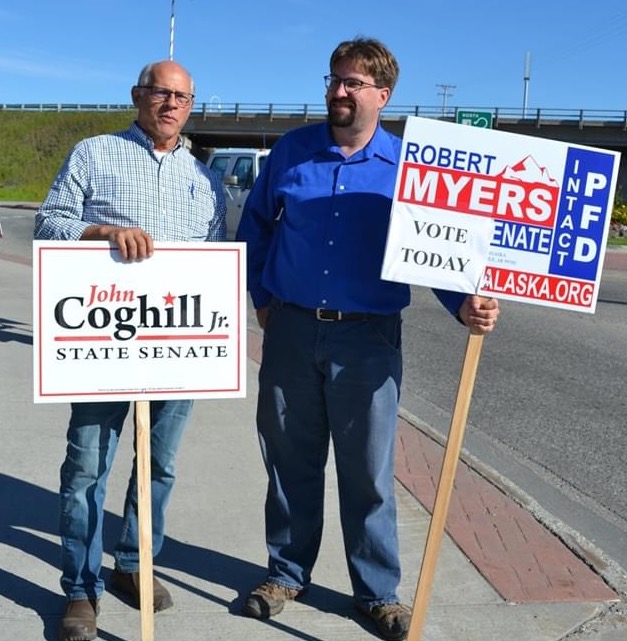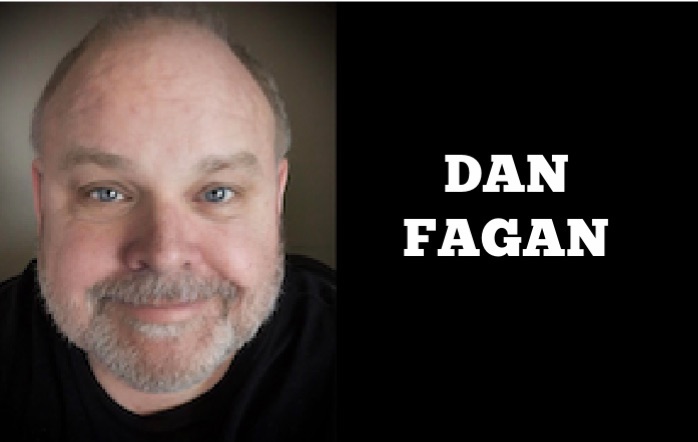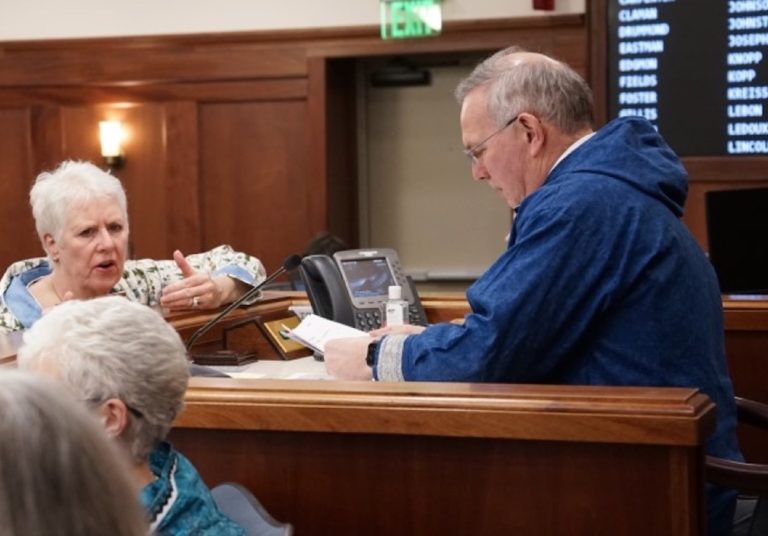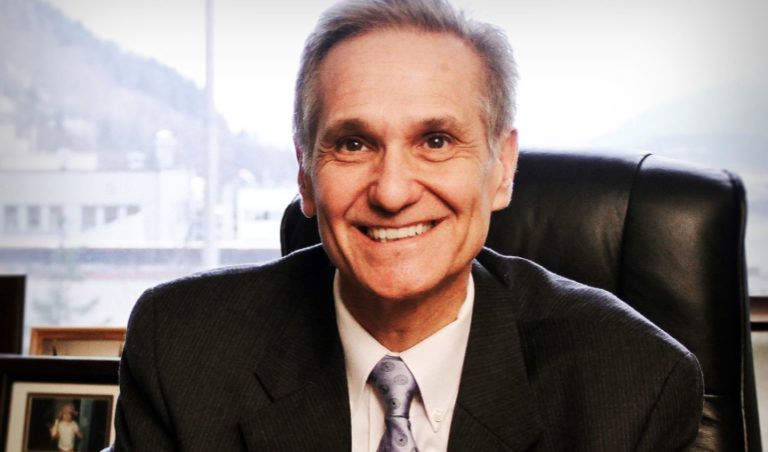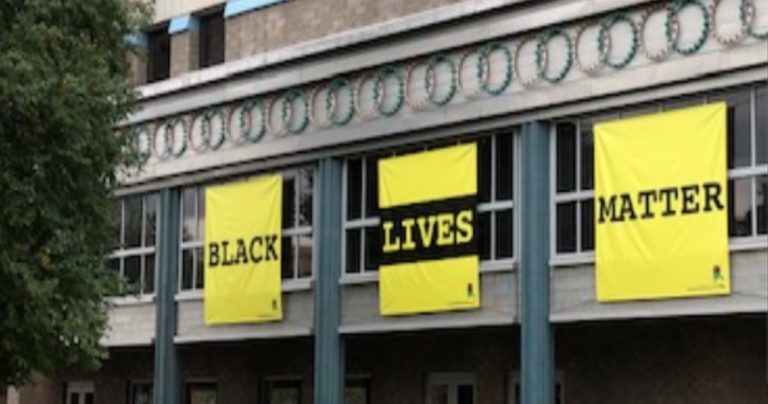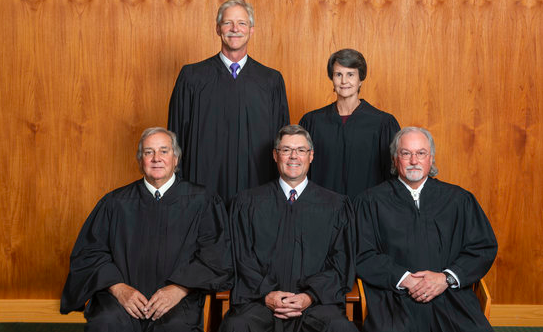In a letter to State Representatives Louise Stutes and Bryce Edgmon, Gov. Mike Dunleavy has reiterated he stands in favor of responsible mining, in favor of process, and in favor of helping to lift Alaskans out of poverty.
He specifically mentioned the importance of improving the lives of those in the Bristol Bay region and asked Stutes and Edgmon to stop being obstructionists against every proposal, and start bringing forward actual solutions to improve the economy.
Dunleavy was responding to criticism from Stutes and Edgmon, who told him in a letter last week that he needs to back off of his support for Pebble Mine. The two want Dunleavy to block any state permits for the proposed mine.
Dunleavy was having none of it. His response went on for three pages.
“As governor of Alaska, one of my duties is to create economic opportunity for the benefit of all Alaskans, utilizing every available resource within our borders. No serious person would disagree that accessing the mineral deposits within the Bristol Bay Mining District, if done in a way that protects the watershed, would transform the lives of Alaskans living in the region. My role is to ensure that each project is subject to a fair and rigorous review process, and that every opportunity to create thousands of jobs is fully explored. Preemptive vetoes, particularly in a region suffering from generational poverty and a chronic lack of economic options, have no place in Alaska,” Dunleavy wrote.
Dunleavy also pointed out that demand for strategic minerals is growing and Alaska can supply it to the nation, and help the country avoid its dependency on hostile foreign powers, such as China.
“I cannot accept your argument that I should not, in my role as governor, seek to move viable projects forward for the benefit of economically-depressed regions and our national security, particularly when my only act of ‘promotion,’ both privately and publicly, has been to call for a fair federal review and permitting process. You are no doubt aware of this fact given that you cite a letter, drafted based on my conversations with Pebble project stakeholders, which stated exactly that.”
“You are also aware that, at every juncture of this process, I have stated the best available science will determine the future of the Pebble project. This is true of every resource development project in the state of Alaska. No resource will be sacrificed for the benefit of another. Like Kensington and Greens Creek mines in Southeast Alaska, any proposal within the Bristol Bay Mining District must demonstrate that it can operate in harmony with our fisheries.
“Regardless of the fate of the Pebble project, let me be absolutely clear: I will not stop fighting for the people of the Bristol Bay region who continue to suffer from an acute lack of economic opportunity,” Dunleavy wrote.
He pointed out that the salmon fishery is something he is unwilling to jeopardize, but it takes wealth out of Alaska. Most of the workers in Bristol Bay are from elsewhere, and only 76 local workers filled the 5,471 processing jobs in 2017. For those from the region who fish, they are earning far less than Outside crews. Only 25 percent of commercial permit-holders are Alaskans.
“In the off season, year-around residents are left to cope with unemployment rates that often exceed 12 percent and poverty levels that are more than double the statewide average,” Dunleavy wrote.
This results in real tragedy in families of Southwest Alaska, a vast majority of whom are Native. Suicide and lower life expectancy, low high school graduation rates, and more — Dunleavy said the poverty is unacceptable to him.
“It is disheartening that a representative of this economically depressed region, with so many of their residents deprived of meaningful opportunities to improve their life, would foment opposition to plans to address these inequalities,” Dunleavy wrote, referring to Edgmon.
“The American dream cannot be realized while constrained by dependency on government. I have yet to meet any Alaskan who wishes to live in this manner. A lack of regional development only prolongs this dependency and denies Alaskans their natural right to self-determination,” the governor wrote.
He then asked the two representatives, who are strong advocates for the Alaska commercial fishing industry, to share their plans for the rest of the Bristol Bay Area economy — an economy in which their own constituents might be helped.
“As you know, our legislative session is just months away, and Alaskans are in desperate need of our help. I stand ready and willing to join you in support of resource development projects that provide the year-around jobs and the opportunities needed to ensure the region’s long-term success.
The economic adversity facing Bristol Bay poses a steep challenge, but the odds are far from insurmountable if we take action today,” Dunleavy wrote.
